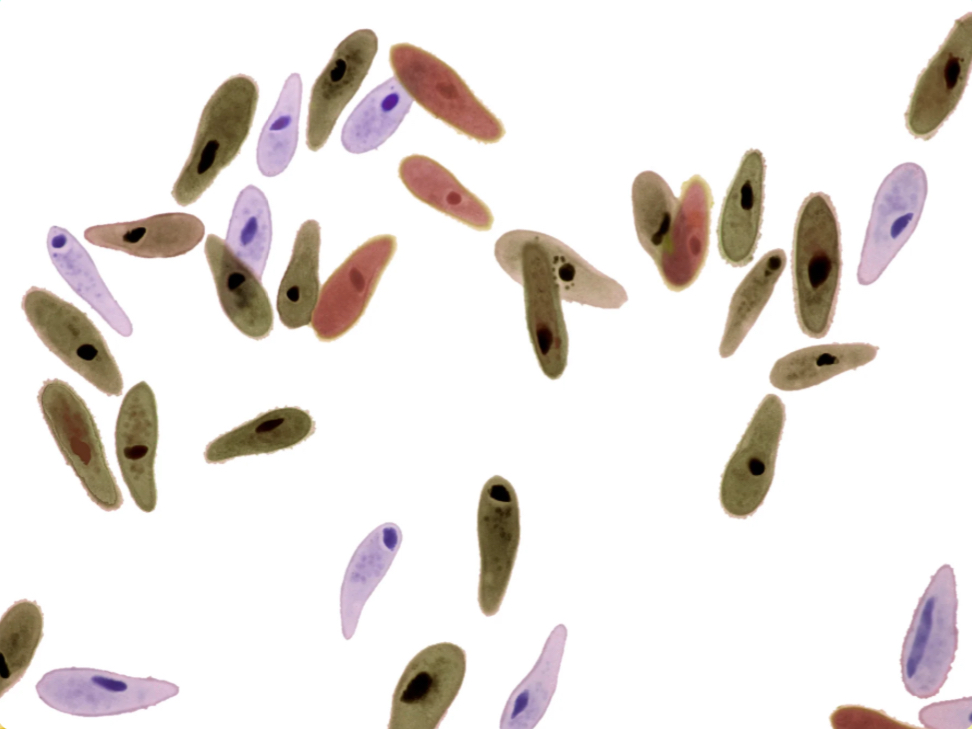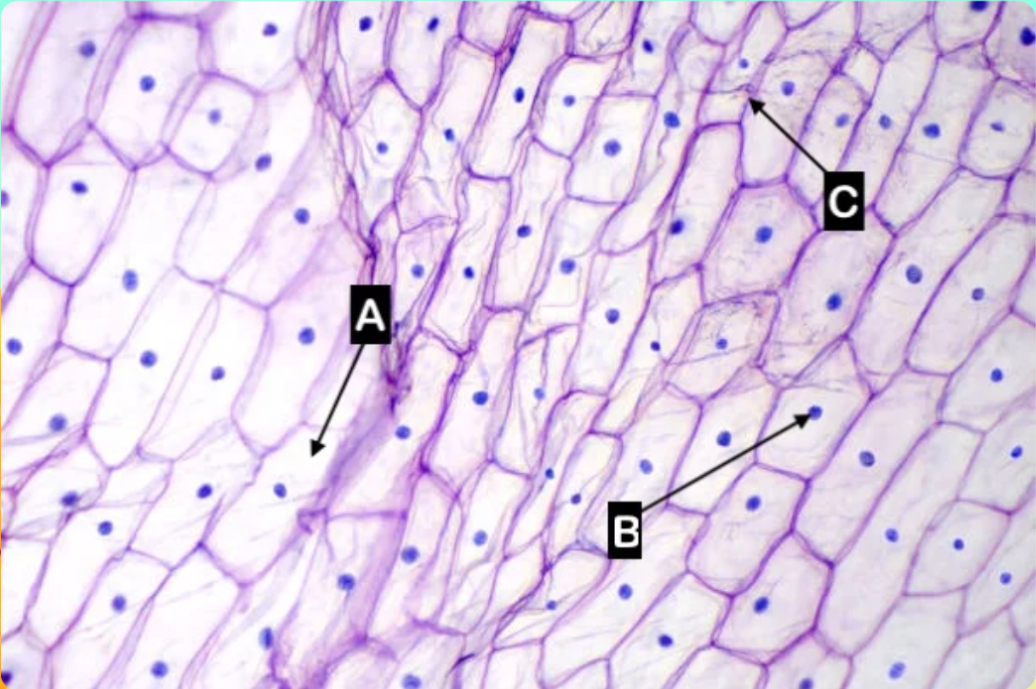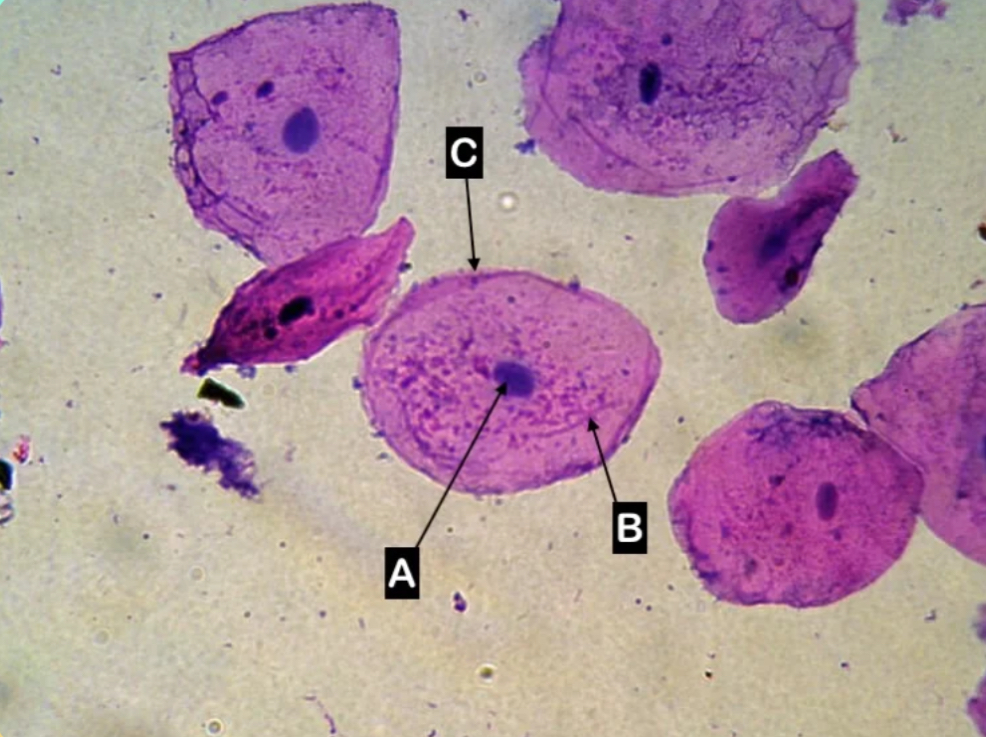Honors Biology - Unit 3 ✅
1/37
There's no tags or description
Looks like no tags are added yet.
Name | Mastery | Learn | Test | Matching | Spaced |
|---|
No study sessions yet.
38 Terms
d. All of them
Which of the following types of cells has a cell membrane?
a. Plant
b. Animal
c. Bacteria
d. All of them
Eukaryotic
Which type of cells would you expect fungi to have?
Prokaryotic
Which type of cells would you expect bacteria to have?
Which type of cells would you expect protists to have?
Eukaryotic
Eukaryotic
Which type of cells would you expect plants and animals to have?
Prokaryote
This type of cell does NOT have a nucleus
Eukaryote
This type of cell is more complex
Prokaryote
This type of cell is small in size
Eukaryote
This type of cell has membrane-bound organelles
d. All cells are prokaryote at some stage
Which of the following is NOT part of the cell theory?
a. Cells come from other cells
b. All living things are made of cells
c. Cells are the basic units of structure and function
d. All cells are prokaryotic at some stage
True
True or false? At some point, all cells will contain DNA
False
True or false? You can use the coarse focus knob on any power.
Which of the following organisms are not eukaryotic?
a. Plant
b. Animal
c. Bacteria
d. Fungi
Robert Hooke
who discovered cells?
Anton van Leeuwenhoek
Who was the first to see living microorganisms in a sample of pond water?
A. Robert Hooke
Which of the following individuals did NOT contribute to the cell theory
a. Robert Hooke
b. Rudolf Virchow
c. Matthias Schleiden
d. Theodore Schwann
100x
Medium power = ______x (total magnification)
40x
Low power = _______x (total magnification)
400x
High power = ______x (total magnification)
10x
Ocular lens (eyepiece) = ________x
37,000um
You measure a specimen viewed under a microscope and determine it to be about 3.7cm in length. How long is it in um?
6.3cm
You measure a specimen viewed under a microscope and determine it to be about 63mm in length. How long is it in cm?
Protists
What types of cells are these?

Plant
What type of cell is this?

Animal cell
What type of cell is this?

Light microscope
A microscope where visible light is passed through a specimen and then through glass lenses
Scanning electron microscope
A microscope where an electron beam is used to study the surface details of a cell or other specimens
Transmission electron microscope
A microscope that uses an electron beam to study the internal structure of thinly sectioned specimens
Robert Hooke
The person who first identified cells in 1665 by using an early compound microscope by looking at a thin slice of cork (plant material)
Anton van Leeuwenhoek
A person who observed a sample of pond water using a single lens (simple) microscope
Schleiden in 1838
Came to the conclusion that plants are made of cells
Schwann in 1839
Came to the conclusion that animals are made of cells
Virchow in 1855
Came to the conclusion that cells come from pre-existing cells
All living things are composed of cells
Cells are the basic units of structure and function
New cells are produced from existing cells
What are the three parts of the cell theory?
SA/V ratio
The ratio where cells need a surface area large enough to service volume of cell
Are surrounded by a barrier called the cell membrane and at some point contain DNA
What are two things all cells have
Prokaryote
A type of cell that has no nucleus present, no membrane-bound organelles, is smaller in size, has a simple form. Ex: bacteria
Eukaryote
A type of cell that has a nucleus, has membrane-bound organelles, is larger in size, is more complex. Ex: plants, animals, fungi, protists